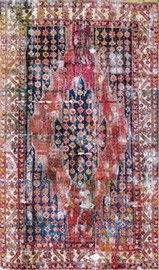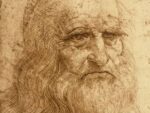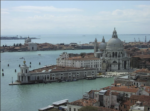Jean-Baptiste Maitre – Fluid Carrying the Hopes of Ships in Distress

Jean-Baptiste Maitre presenta sculture, dipinti e un video giocando con la nozione di tempo filmico e la misurazione dello spazio.
Comunicato stampa
La galleria RITA URSO è lieta di presentare Fluid Carrying the Hopes of Ships in Distress, una personale dell’artista francese Jean-Baptiste Maitre.
La mostra, il cui titolo è tratto da una poesia che Henry-Martin Barzun scrisse nel 1913, è incentrata sul senso di unificazione spaziotemporale determinatosi nella società in seguito all’invenzione delle onde radio. Vista come un prodigio, questa tecnologia permise agli eventi, anche ai più catastrofici, di essere percepiti in tempo reale in qualsiasi luogo, come ad esempio l’incidente del Titanic nel 1912.
Intanto, nello stesso periodo, i registi svilupparono una tecnica di montaggio video basata su sequenze accelerate, chiamata contrast editing, per ricreare un senso di simultaneità tra le scene, dando allo spettatore la sensazione di una visione dotata del potere dell'ubiquità.
Nella galleria Maitre presenta sculture, dipinti e un video giocando con la nozione di tempo filmico e la misurazione dello spazio. Per fare questo l’artista fa riferimento al contrast editing e al toise, un righello altamente contrastato usato dagli archeologi per misurare le proporzioni degli oggetti in relazione al loro contesto.
Le composizioni scultoree esposte nello spazio della galleria sono realizzate con corde suddivise in parti dipinte di lunghezza crescente, basate sulla struttura del toise. Le corde vengono a volte mostrate davanti a uno sfondo (Ropes and Chevrons), altre volte misurando lo spazio della galleria stessa (Rope on Three Axes), o semplicemente lasciate sul pavimento.
La mostra è composta anche di una costellazione di dipinti strutturati come strisce di pellicola da 35 mm, ognuna delle quali rappresenta una certa quantità di tempo filmico. Questi lavori raffigurano immagini modificate dall’artista per migliorare la loro qualità filmica. Essi mostrano un tappeto turco, una serie di composizioni di corda intrecciata a parti di conversazione, gli sfondi di un salvaschermo e alcuni scatti notturni ripresi da un elicottero della polizia.
Le pitture sono esposte come una grande immagine sul muro centrale della galleria, un metodo di esposizione ispirato a “la table de travail” di George Didi-Huberman. E’ il tavolo dell’artigiano su cui i pensieri sono associati al fine di creare nuove visioni. Connessioni visive tra i dipinti sono realizzate anche attraverso la loro scansione e trasformazione in un video digitale.
Con queste opere Jean-Baptiste Maitre mira a misurare lo spazio e il tempo attraverso il cinema, mostrando gli effetti che quest’azione produce su immagini e narrazione: “Per caso ho notato che il toise – uno strumento fatto per misurare un oggetto in relazione al suo contesto – ha una struttura visiva simile ad alcuni sistemi di film editing, originariamente sviluppati per ingannare il nostro comune senso di misurazione. Questo pensiero ha prodotto una vertigine e stimolato la mia immaginazione”.
Jean-Baptiste Maitre è nato in Francia nel 1978. Vive e lavora tra Parigi e Amsterdam. Ha studiato Storia dell’Arte alla Sorbona e all’École des Beaux-Arts di Parigi e Fotografia alla Gobelins École de l’Image di Parigi. É rappresentato in Olanda dalla galleria Martin van Zomeren di Amsterdam. Le sue mostre personali e collettive includono: “IDFA”, Eye amsterdam Film Museum, Amsterdam; “It aint whatcha write, its the way atcha write it”, Manifesta Foundation, Amsterdam; “CODEX”, Wattis Institute for contemporary Arts, San Francisco; “Stripe Paintings”, La Salle De Bain art center, Lyon; “Mandala République”, Martin van Zomeren, Amsterdam; “Post-Sculpture”, con Bruce McClean, Galerie 1m3, Lausanne.
Rita Urso is glad to present Fluid Carrying the Hope of Ships in Distress, a solo exhibition by French artist Jean-Baptiste Maitre.
The show, which title comes from a poem that Henry-Martin Barzun wrote in 1913, rotates around the sense of unification of time with space, triggered by the invention of wireless radio signals. Seen as a wonder, this technology allowed events, as catastrophic as they could be, to be perceived in real time at any location, such as the Titanic incident in 1912.
Meanwhile, during the same time period, film makers developed a video editing technique based on accelerated motion sequences, called contrast editing. This recreated a sense of simultaneity between the scenes, giving the audience the feeling of having an ubiquitous vision.
In the gallery Maitre presents sculptures, paintings and a video playing with the notion of filmic time and the measurement of space. To do this the artist is referencing the contrast editing and the toise, a highly contrasted ruler used by archeologist to measure the proportions of objects in relation to their context.
The sculptural compositions displayed in the gallery space are made of ropes with painted sections of increasing lengths based on the structure of the toise ruler. The ropes are sometime displayed in front of a background (Ropes and Chevrons), sometimes measuring the space of the gallery itself (Rope on Three Axes), or simply left on the floor.
The exhibition is also composed with a constellation of paintings structured as 35mm film strips, each representing a certain amount of filmic time. The paintings depict images modified by the artist to enhance their filmic quality. They show a turkish carpet, a set of rope compositions entangled with written jokes, patterns of a screen saver, and night-shots seen from a police helicopter.
The paintings are displayed as one large picture on the central wall of the gallery, a method inspired by Georges Didi-Huberman's idea of exhibiting 'la table de travail'. It is the craftsman's table on which thoughts are associated in order to create new visions. Visual connections between the paintings are also made through scanning and processing them into a digital motion video.
With these works Jean-Baptiste Maitre aims at measuring space and time through cinema, and showing the effects that this action has on images and narration: "By chance I noticed that the toise – a tool made to measure an object in relation to its context – has a similar visual structure than some film editing systems, originally developed to trick our common sense of measurement. This thought produced a vertigo and triggered my imagination".
Jean-Baptiste Maitre (1978, France), lives and works in Amsterdam. Maitre received his degrees in Art History at Paris-4 Sorbonne University and his MA at the École des Beaux-Arts in Paris as well as Studio Photography at the Gobelins École de I'Image in Paris. He is represented in The Netherlands by gallery Martin van Zomeren, Amsterdam. Solo and group shows include: "IDFA", Eye Amsterdam Film Museum, Amsterdam; "It ain't whatcha write, it's the way atcha write it", Manifesta Foundation, Amsterdam; "CODEX", Wattis Institute for contemporary Arts, San Francisco; "Stripe Paintings", La Salle De Bain art center, Lyon; "Mandala République", Martin van Zomeren, Amsterdam; "Post-Sculpture" with Bruce McClean, Galerie 1m3, Lausanne.



